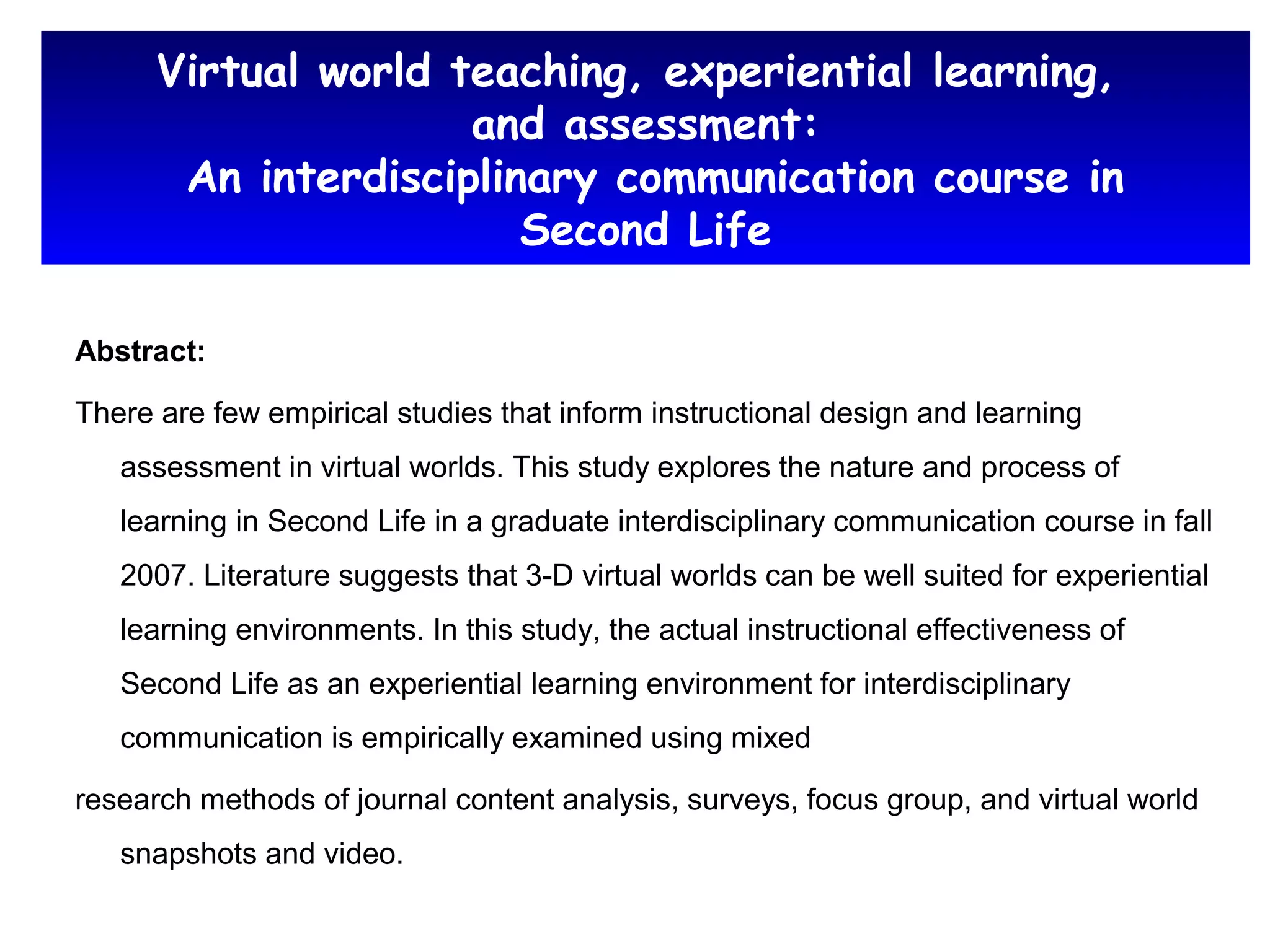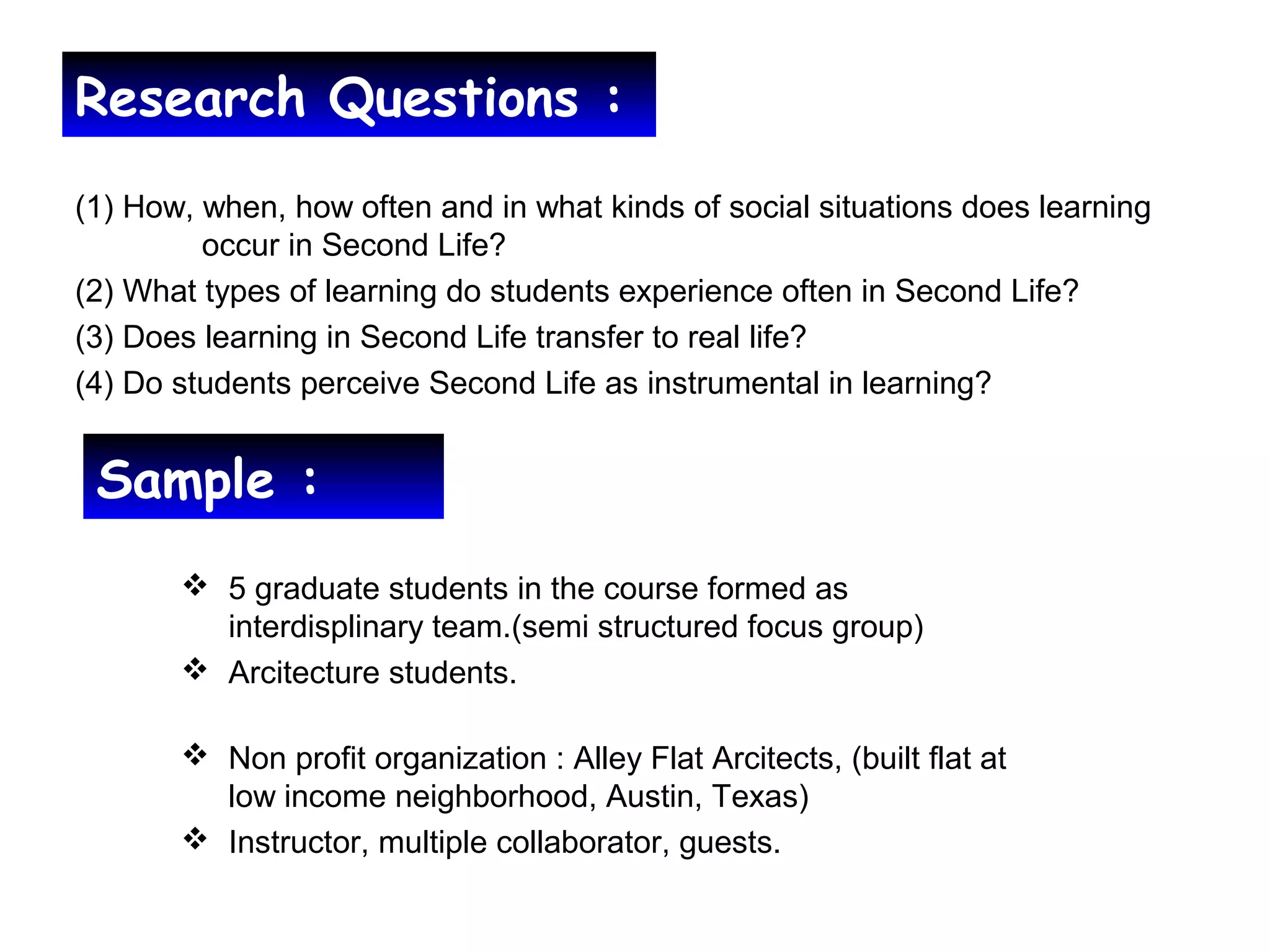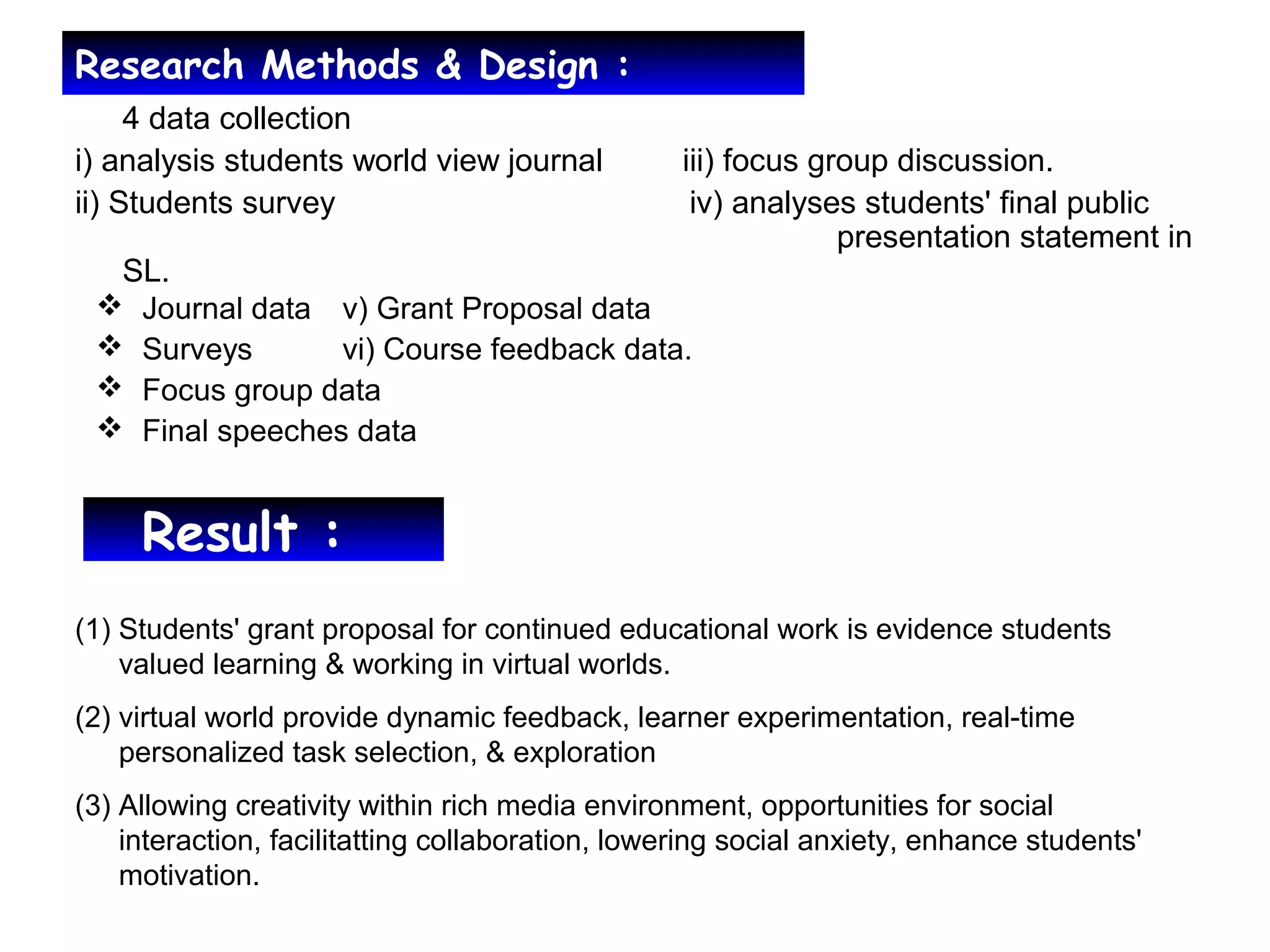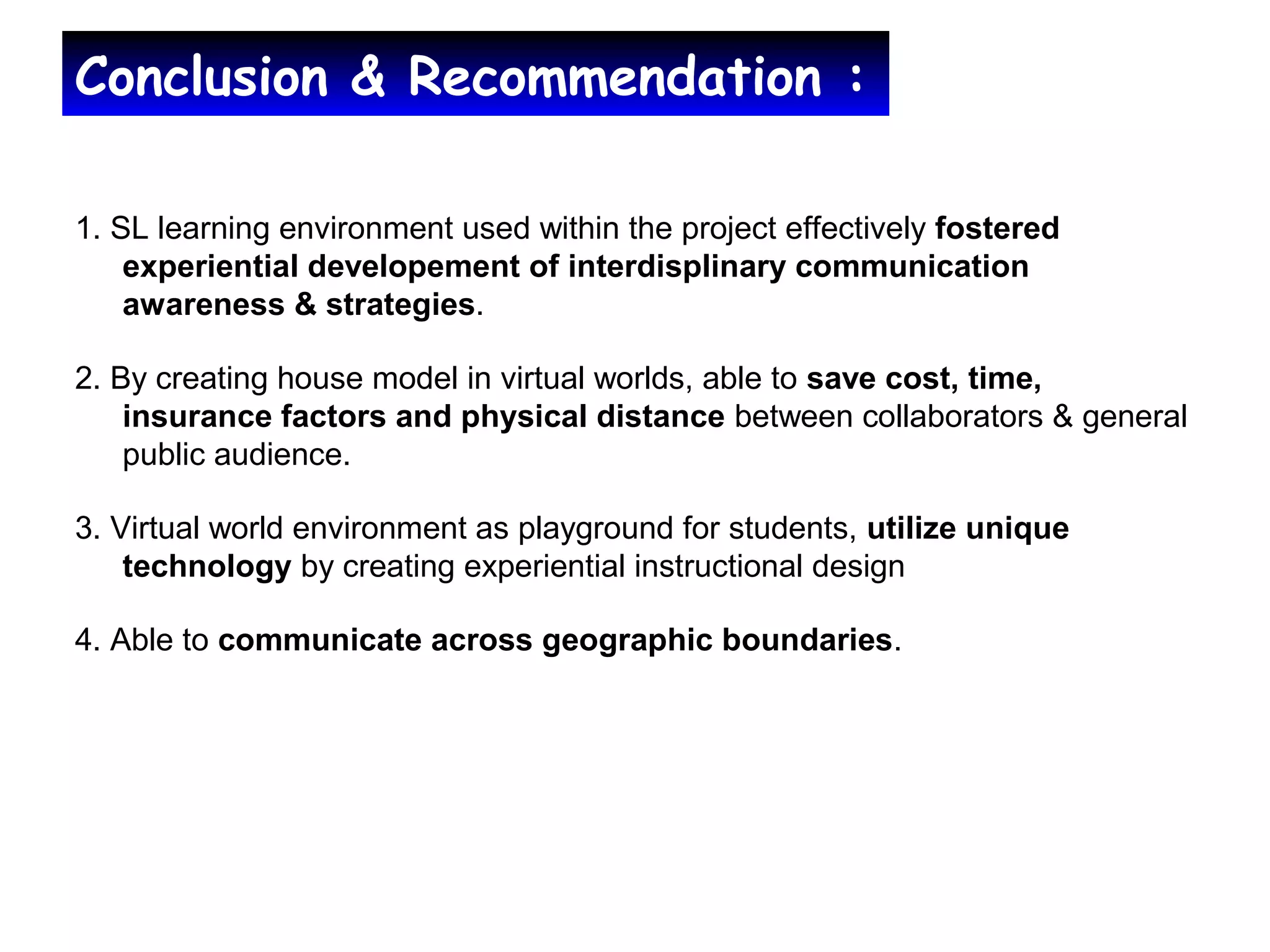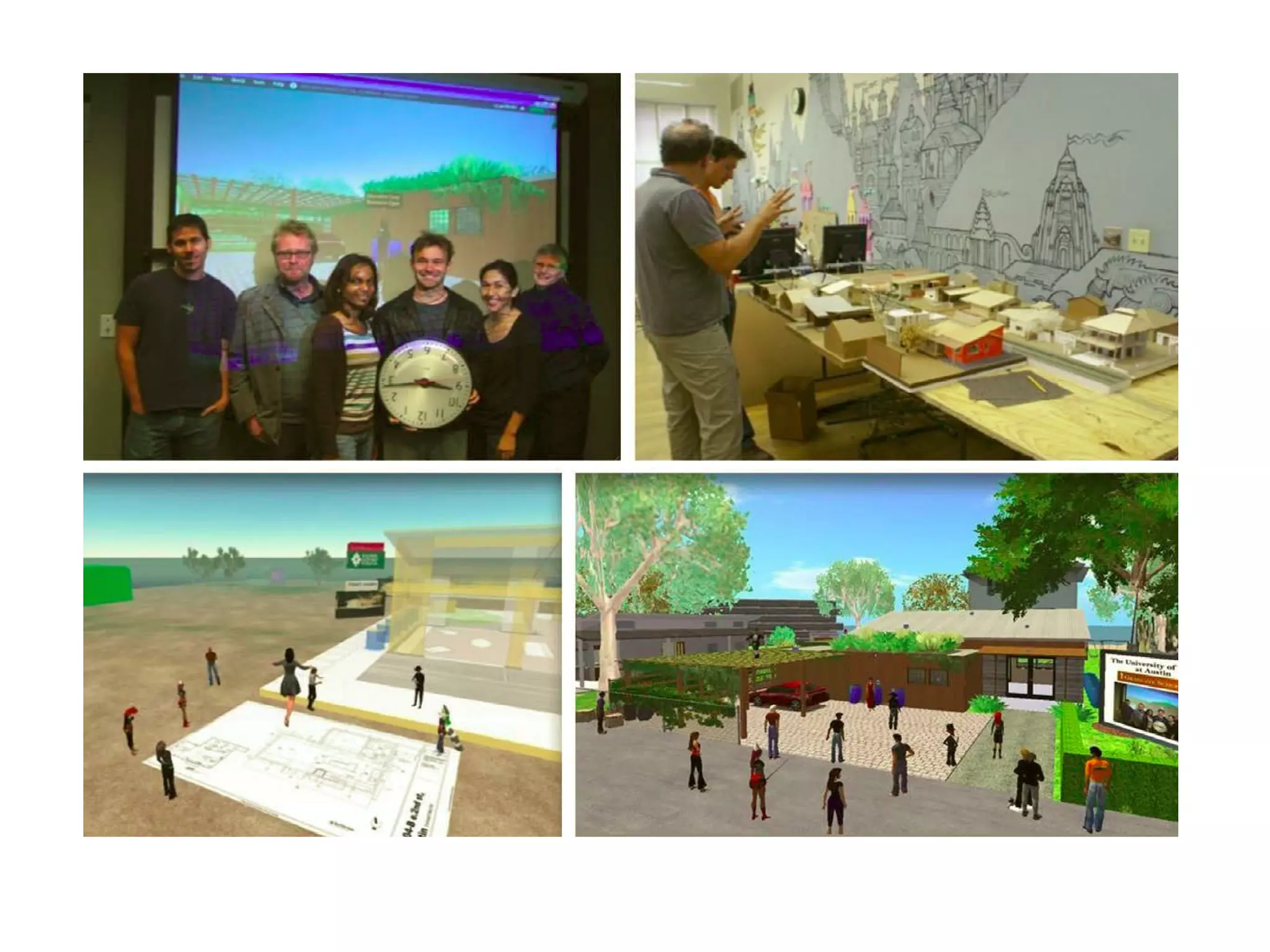This study examined the effectiveness of using Second Life for an interdisciplinary graduate communication course. Data was collected through student journals, surveys, focus groups, and final presentations to analyze how and when learning occurred. Results showed that the virtual world facilitated experiential learning through feedback, experimentation, collaboration, and overcoming social anxiety. Students perceived Second Life as valuable for learning communication skills across disciplines. The study concluded virtual worlds can foster interdisciplinary learning through experiential activities while saving costs compared to real-world projects.
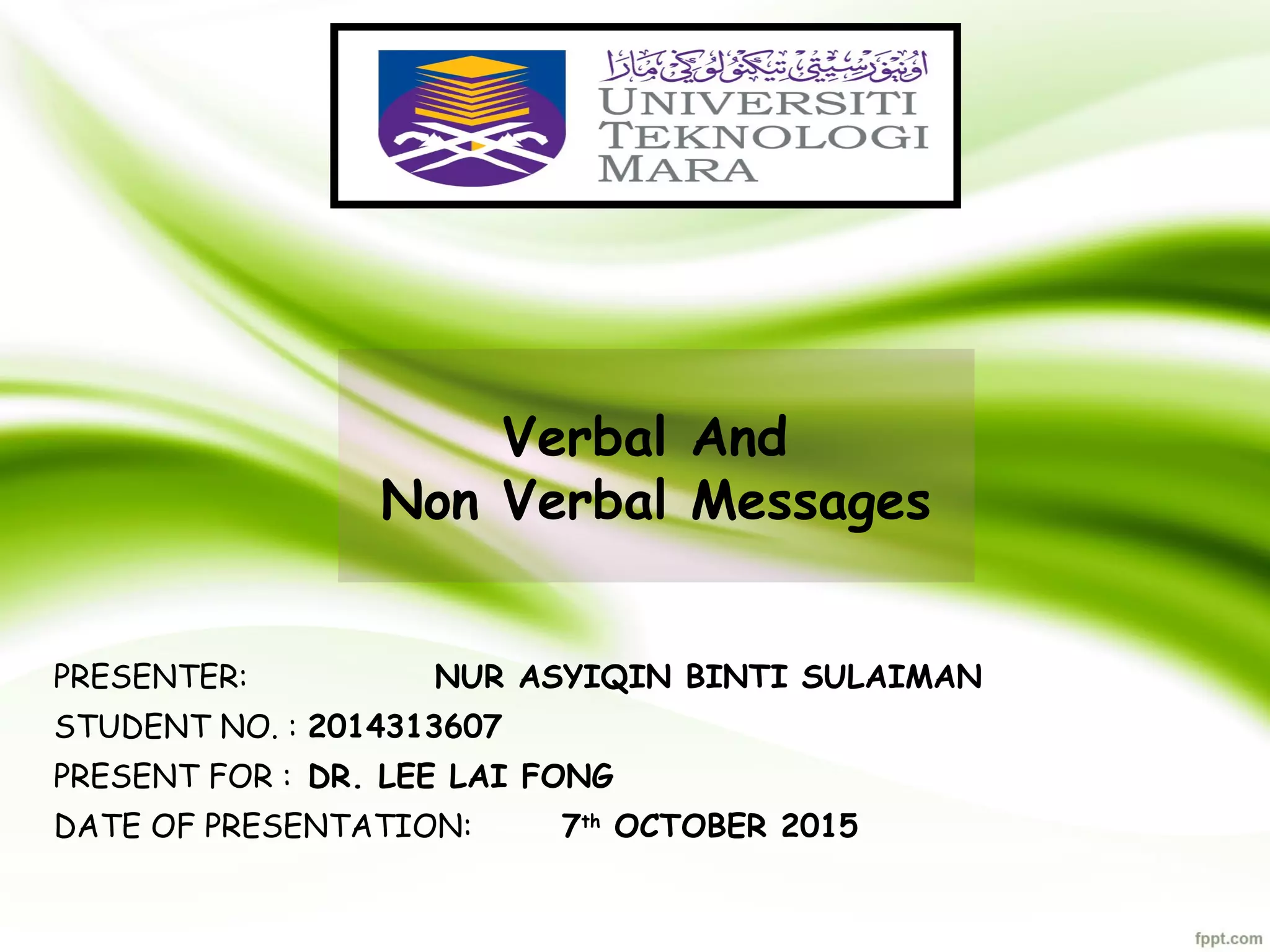
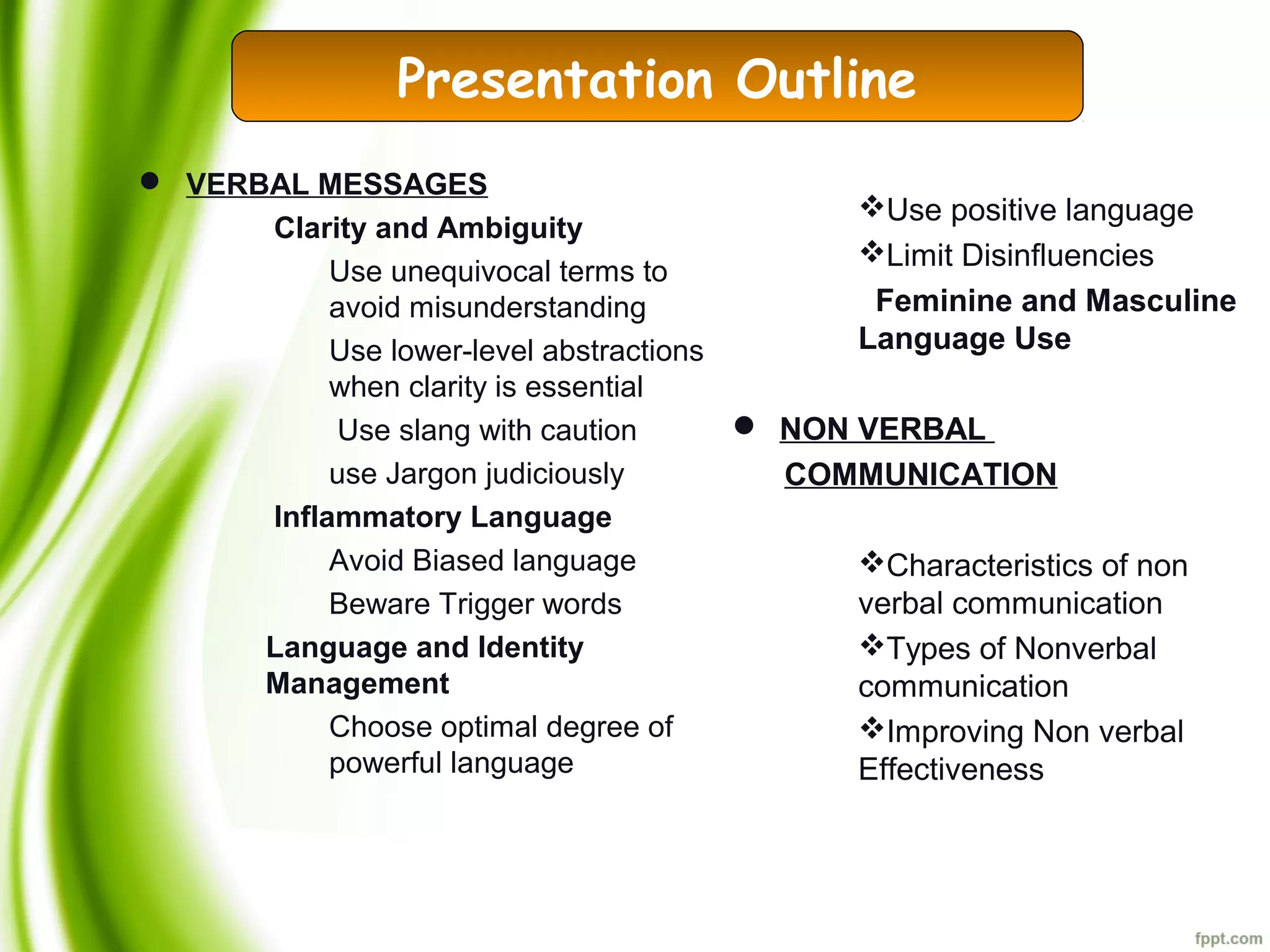
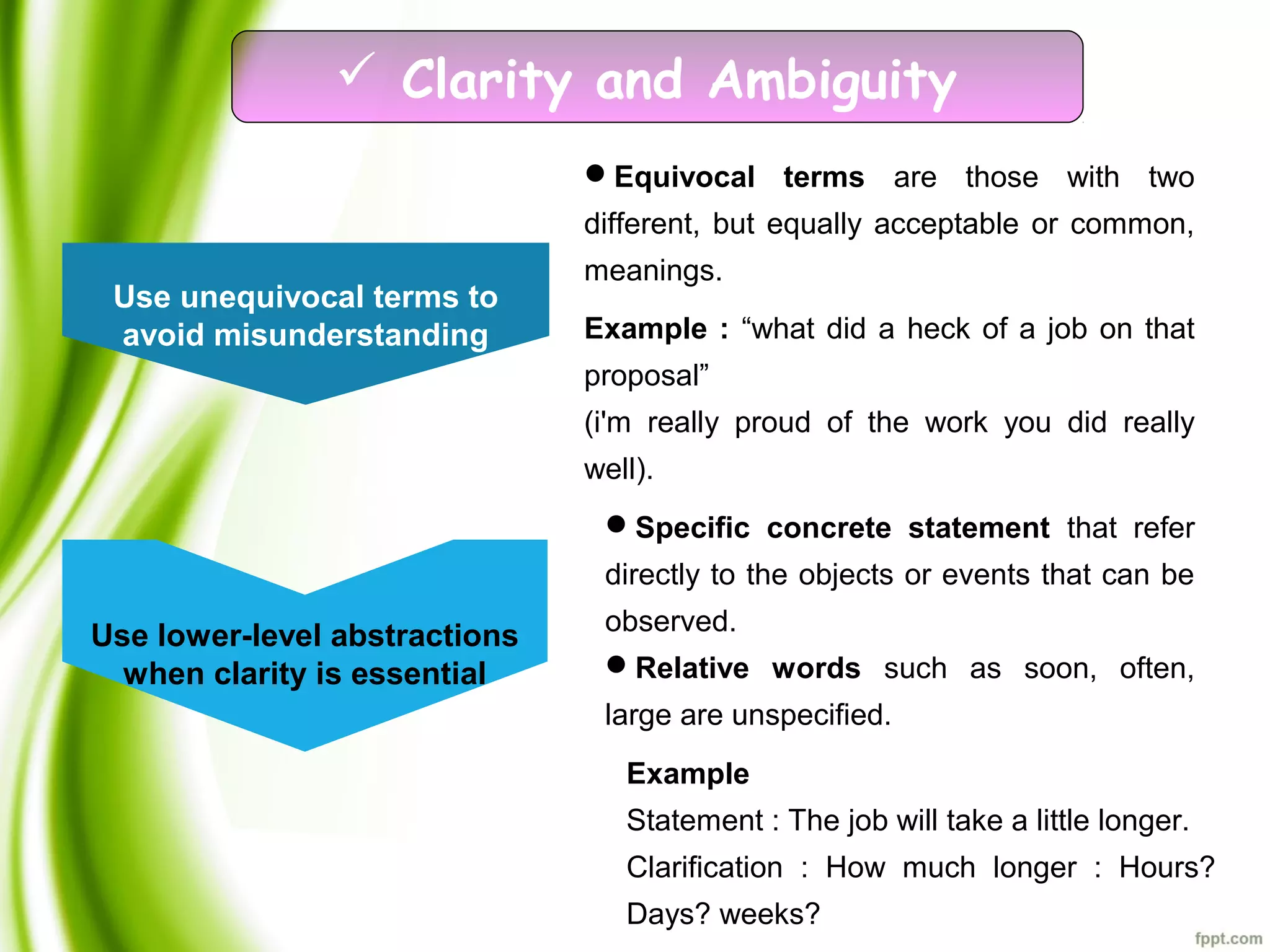
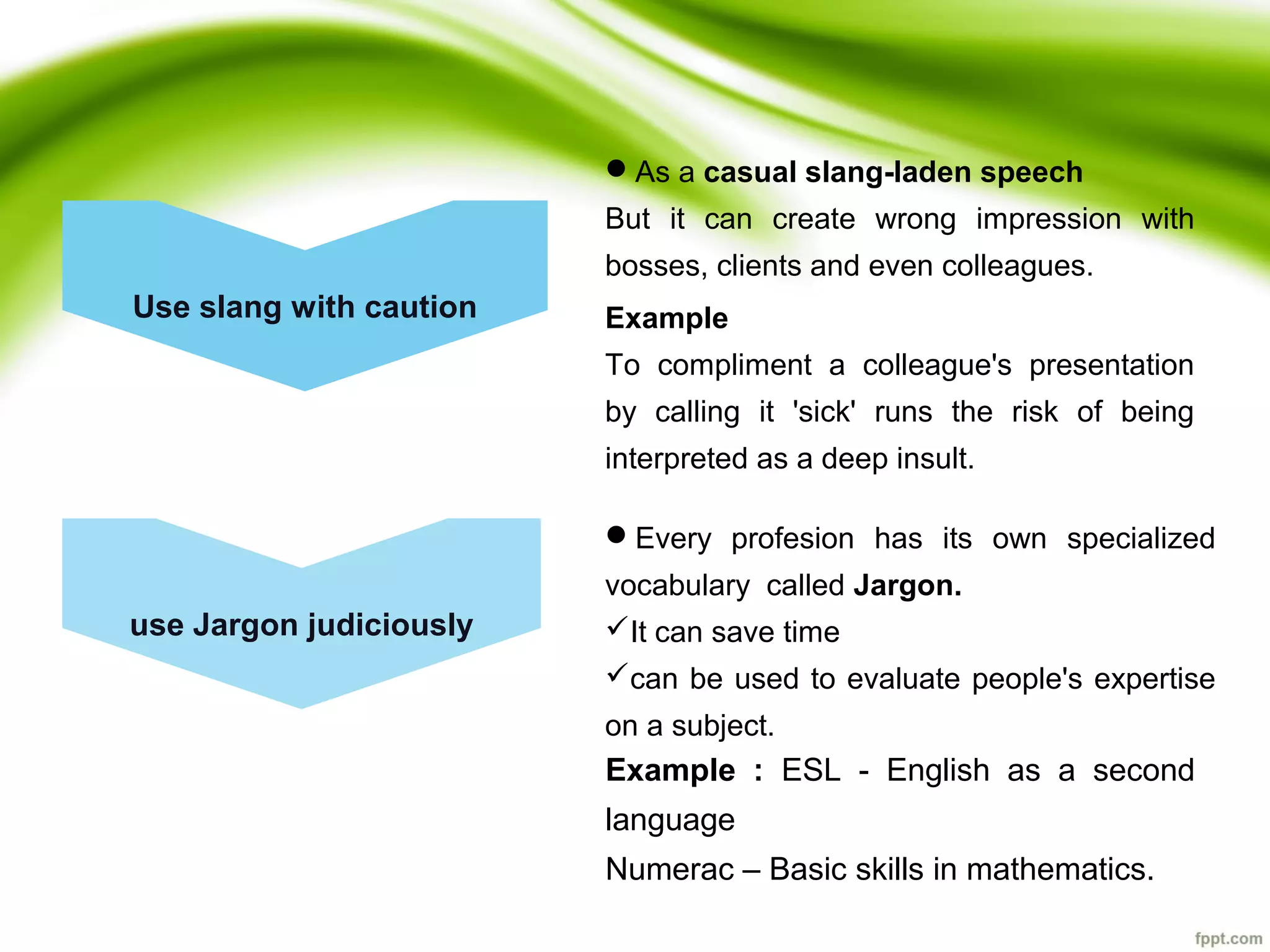
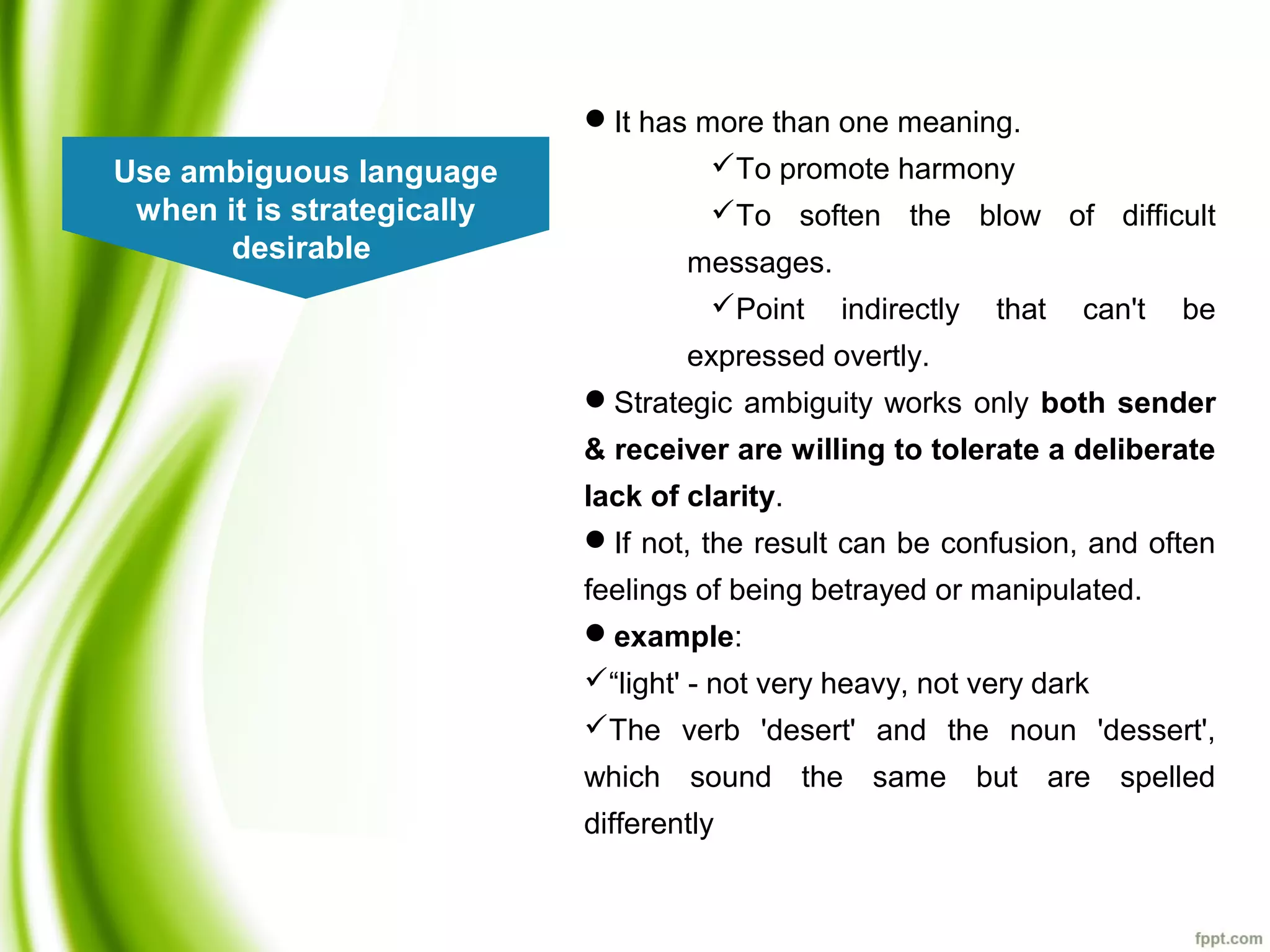
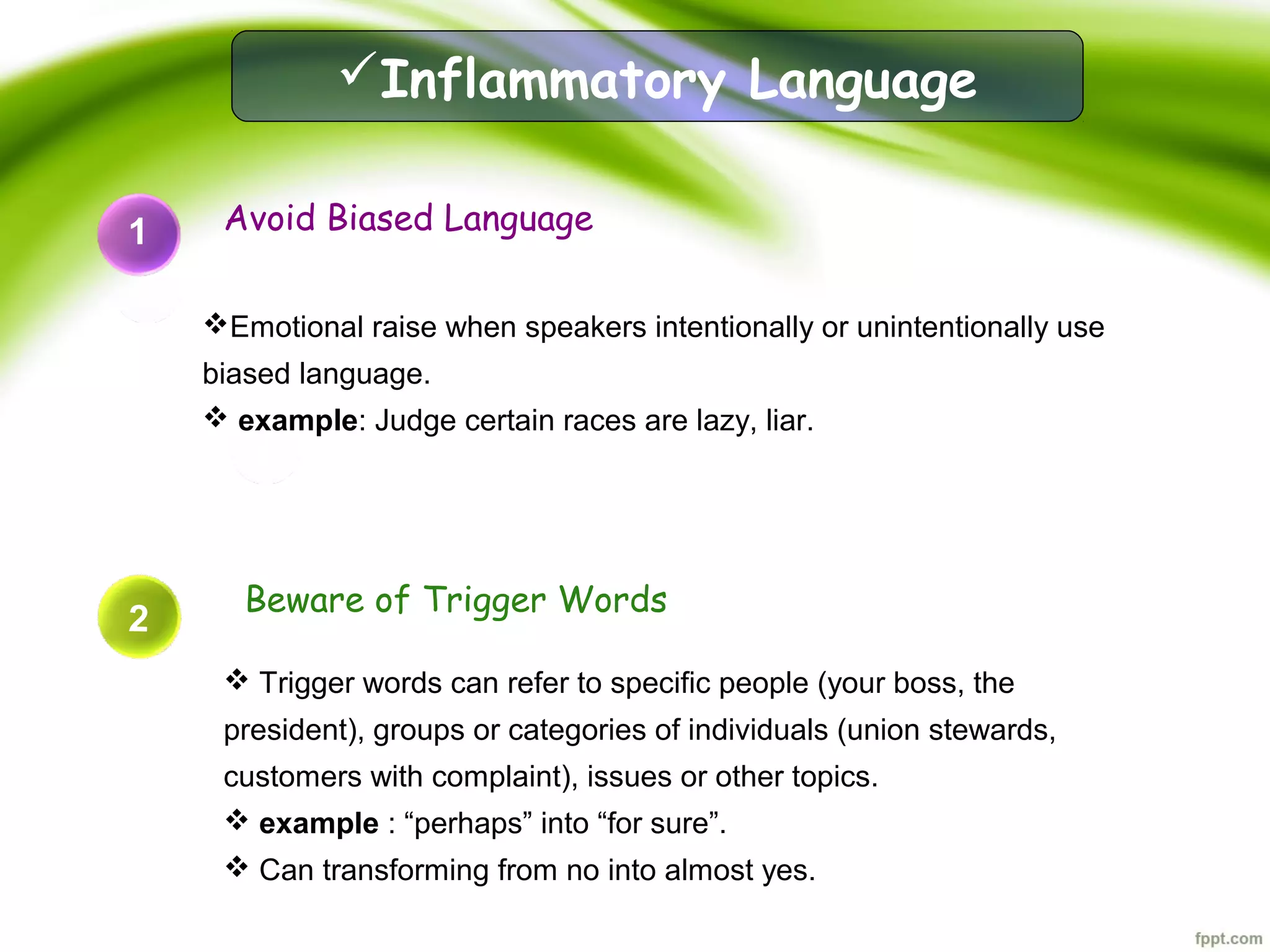
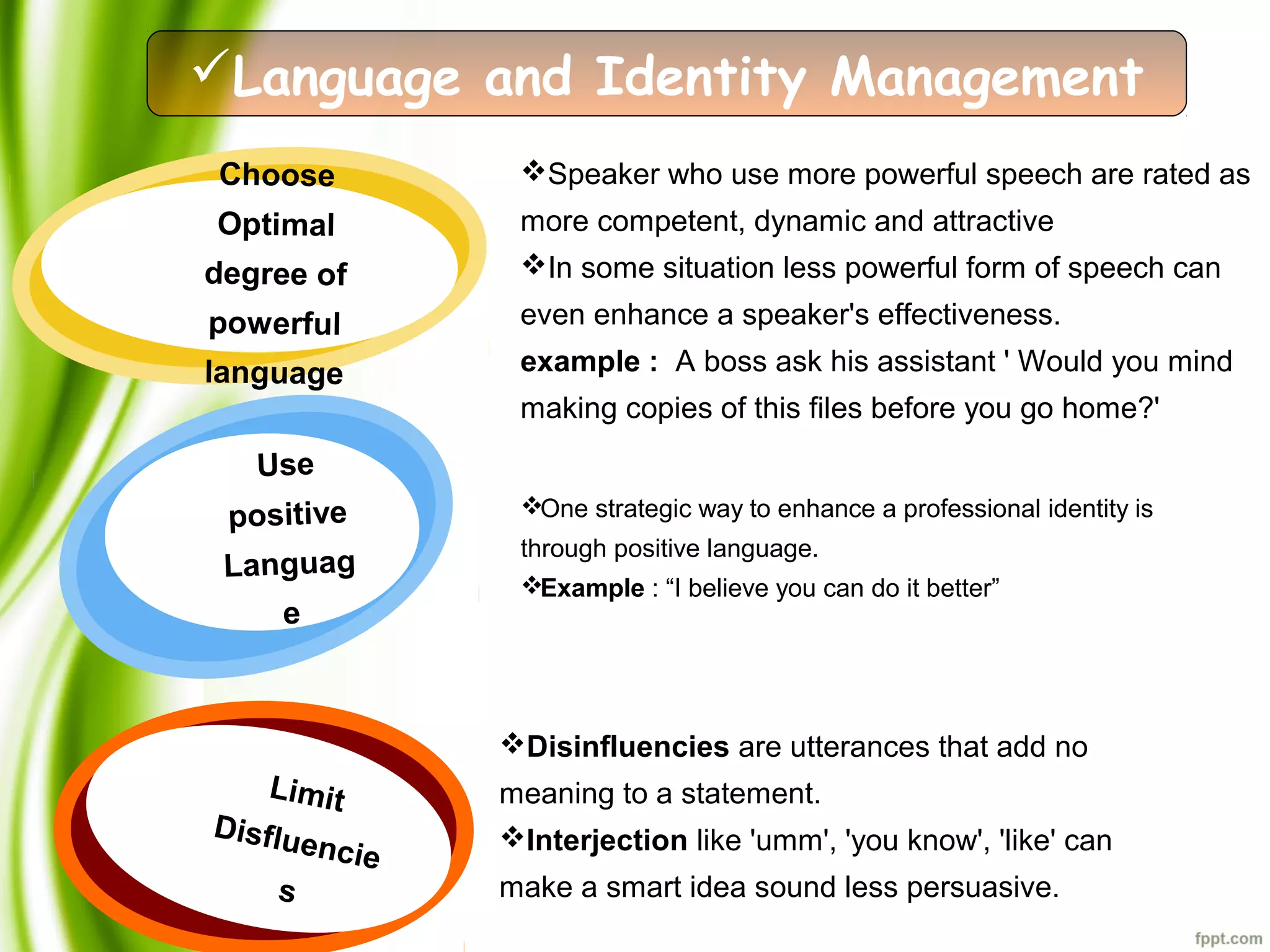

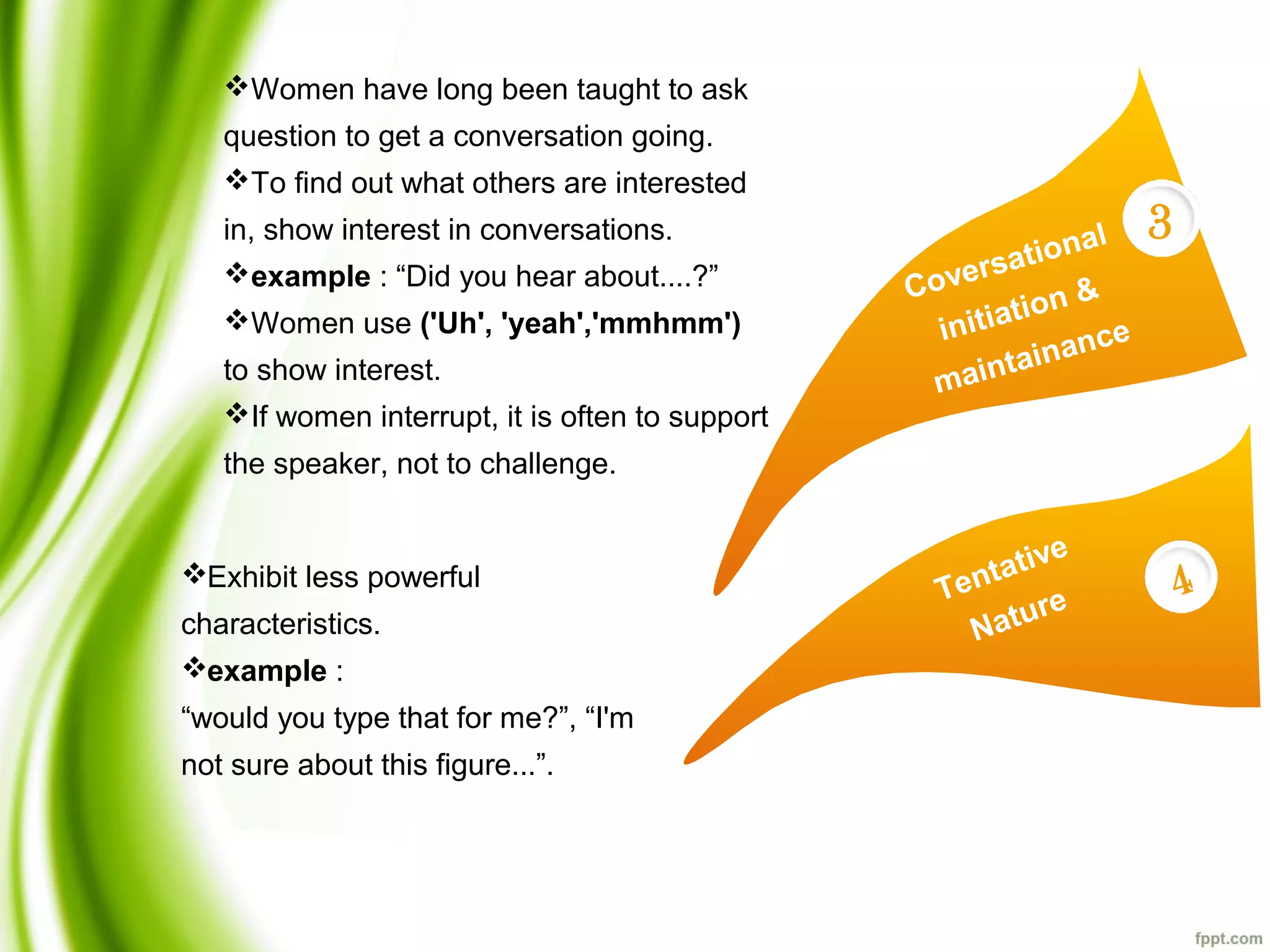

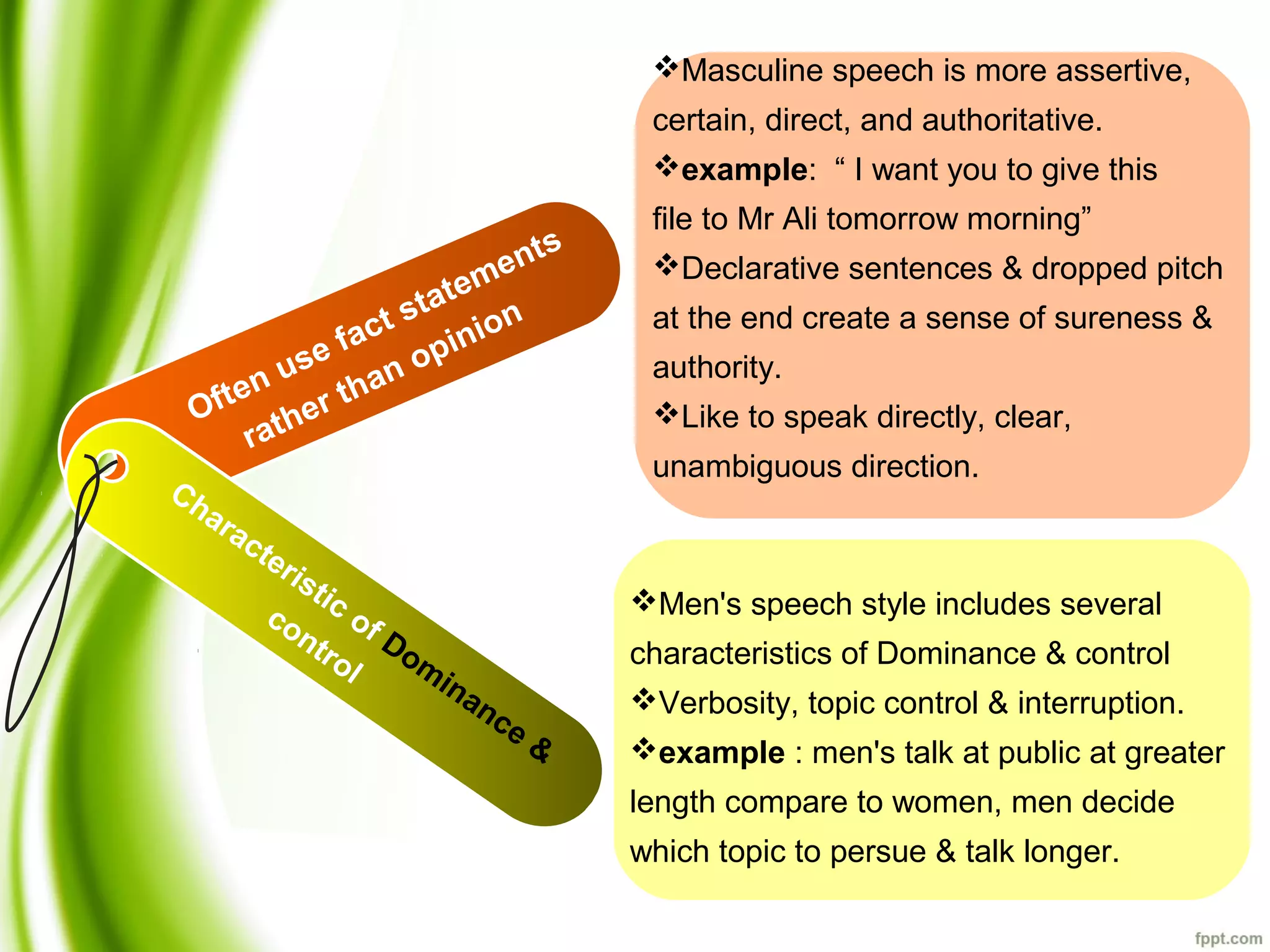
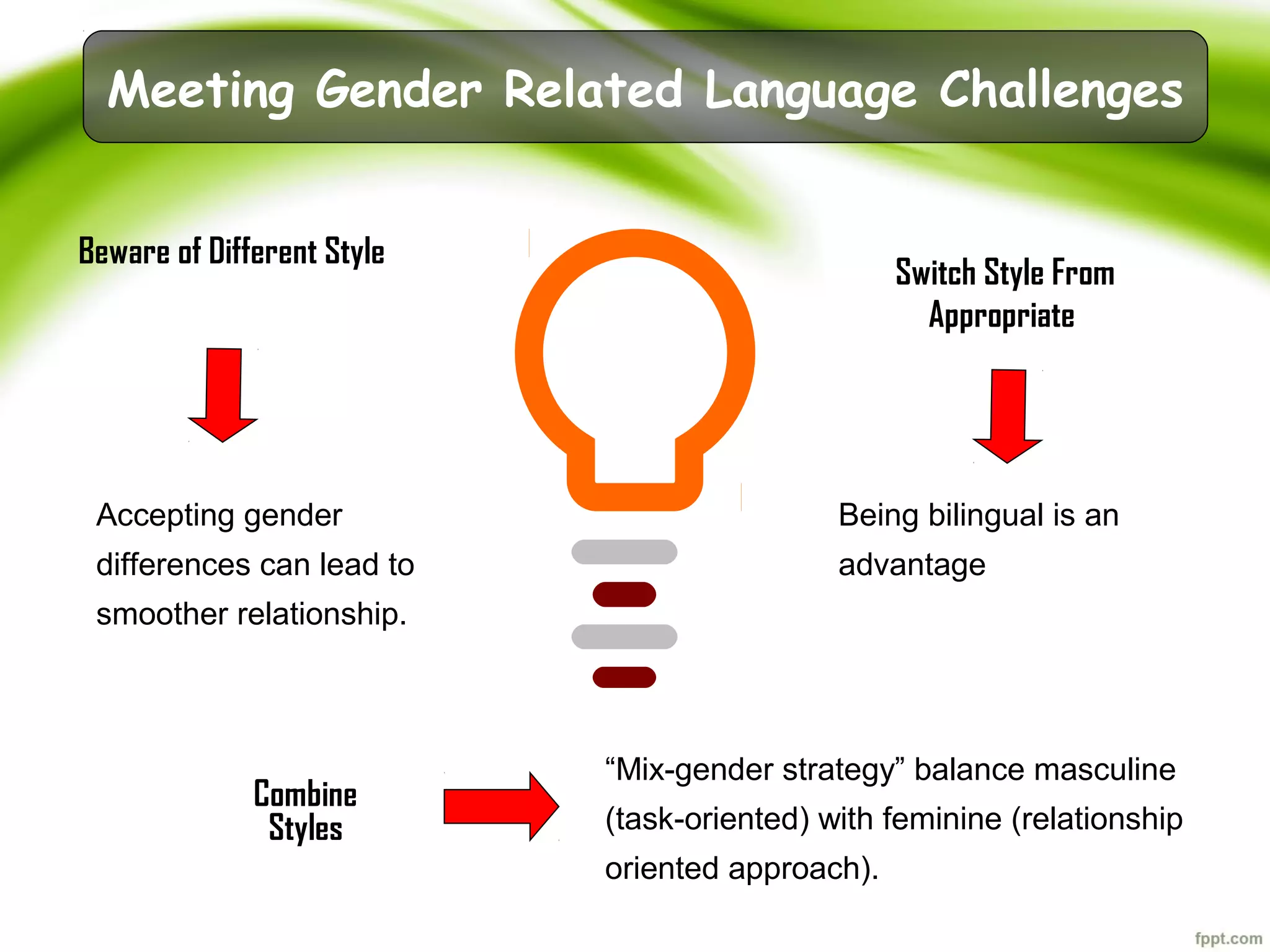
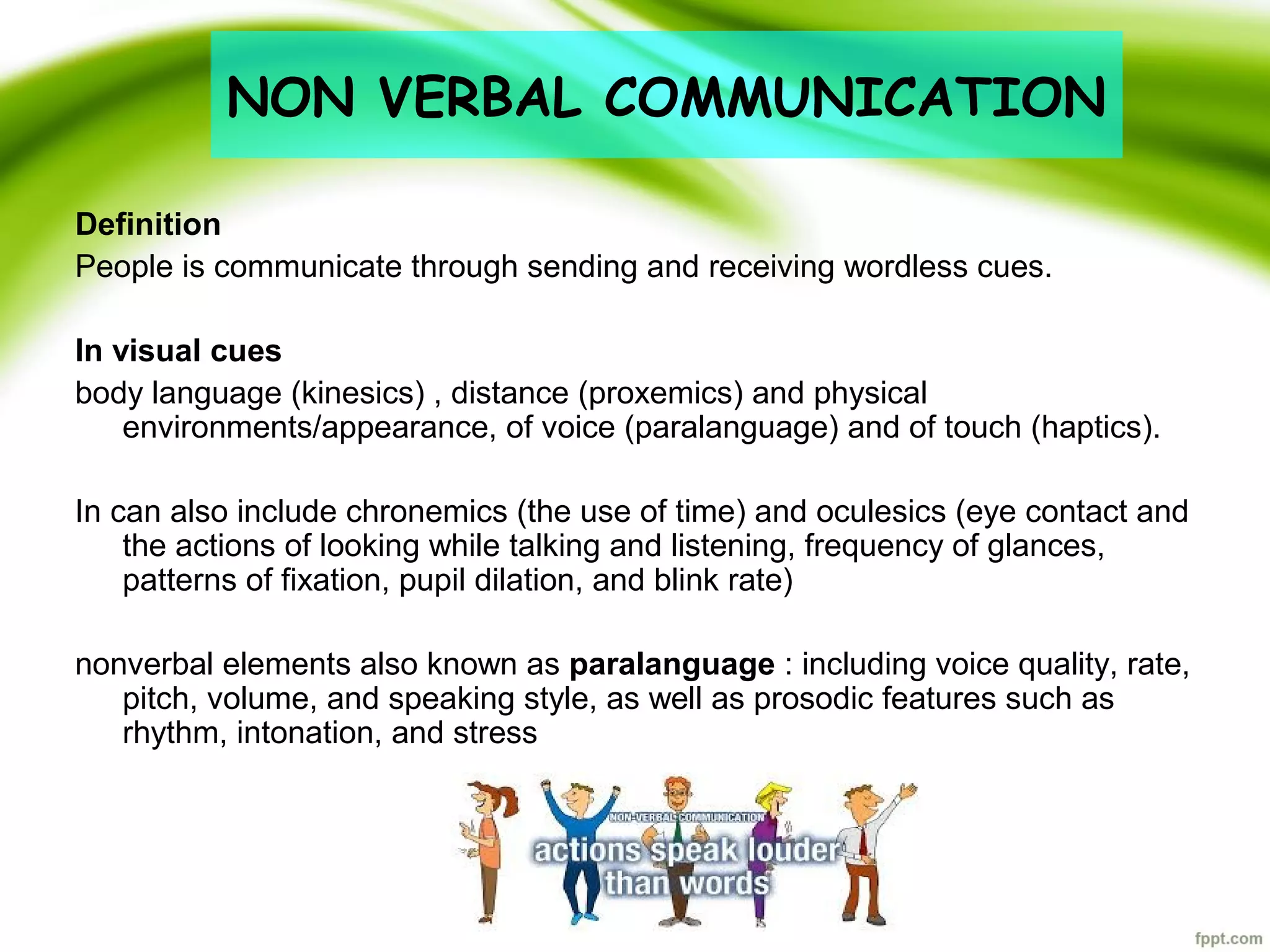


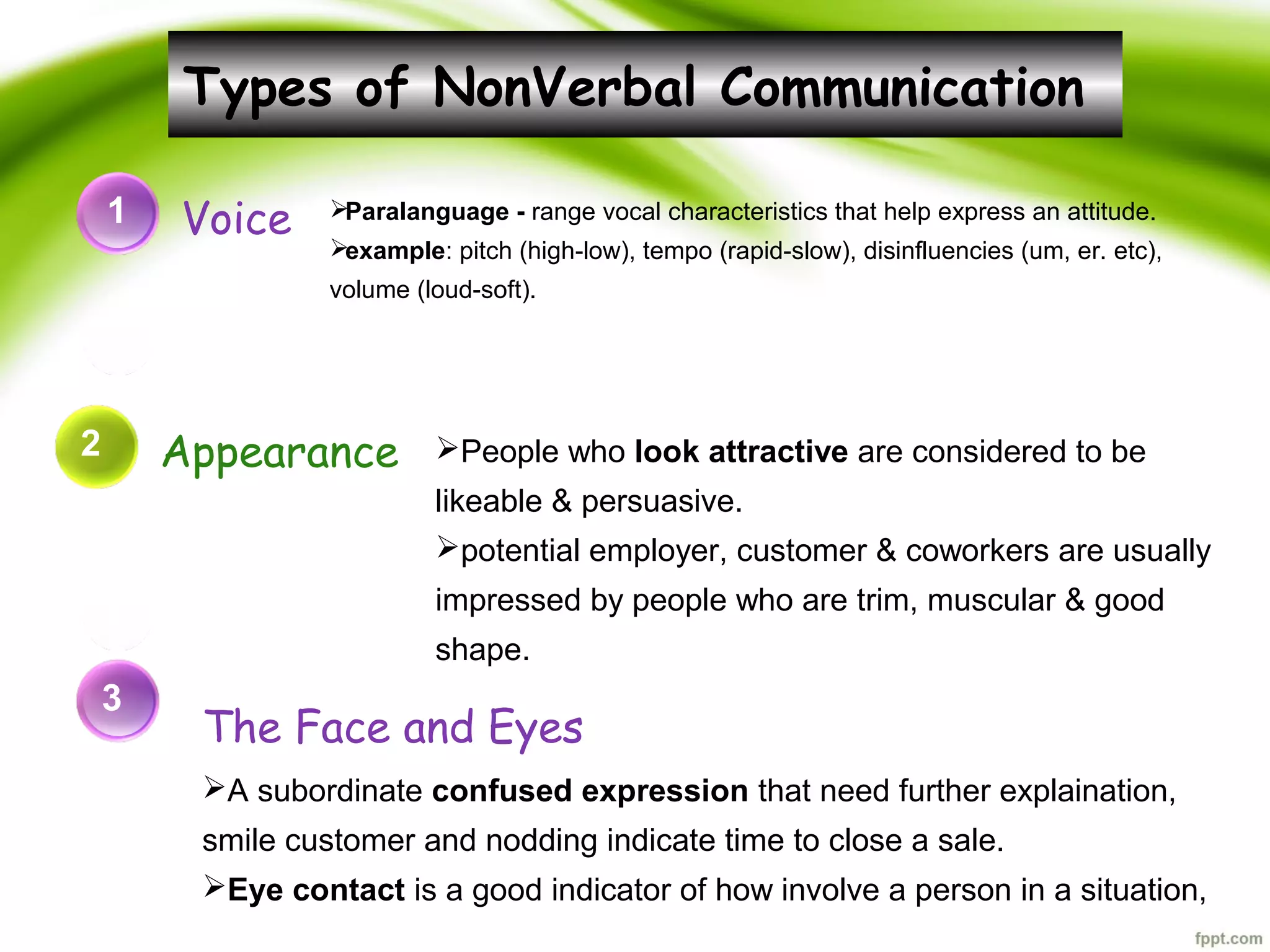
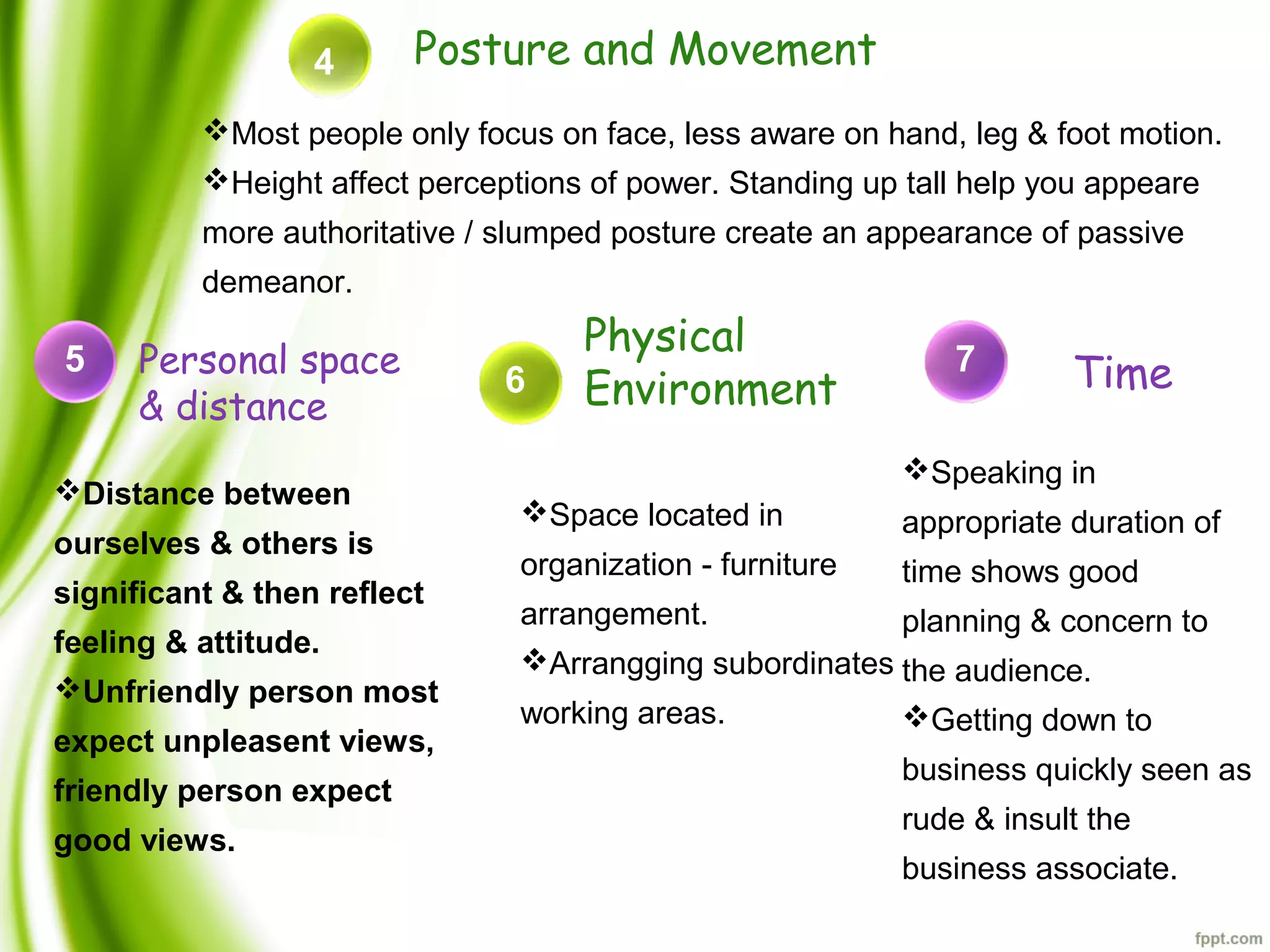
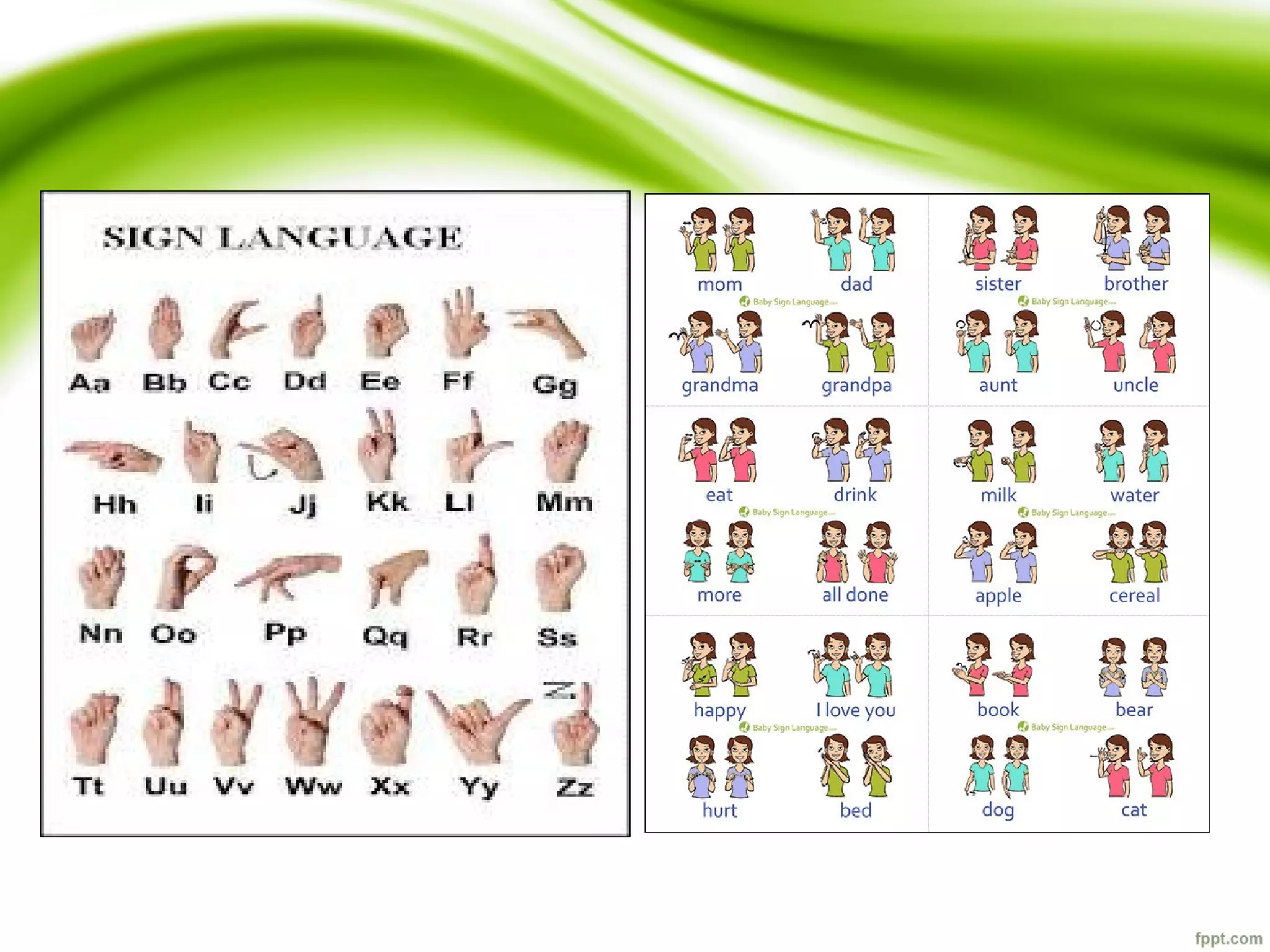
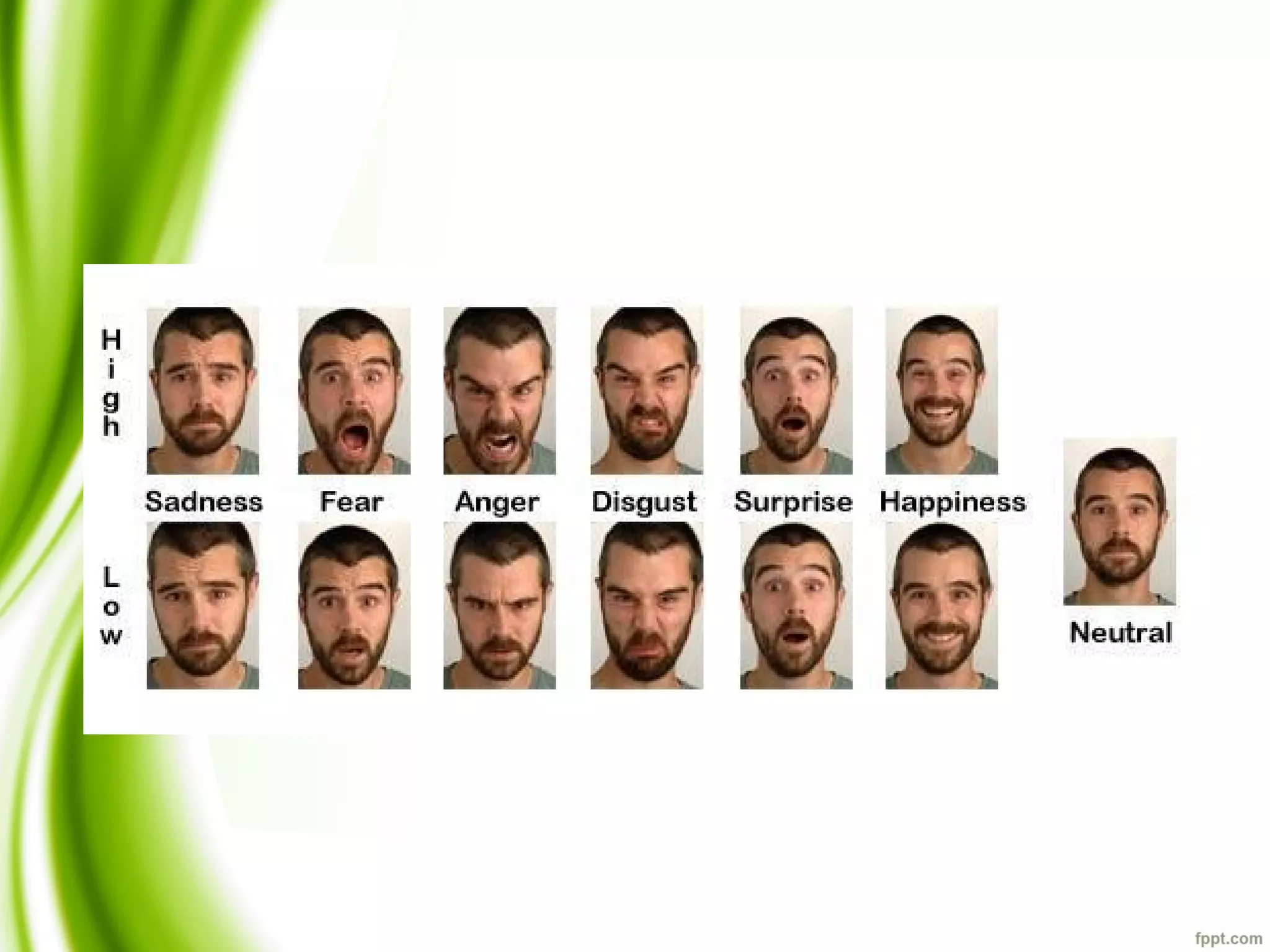
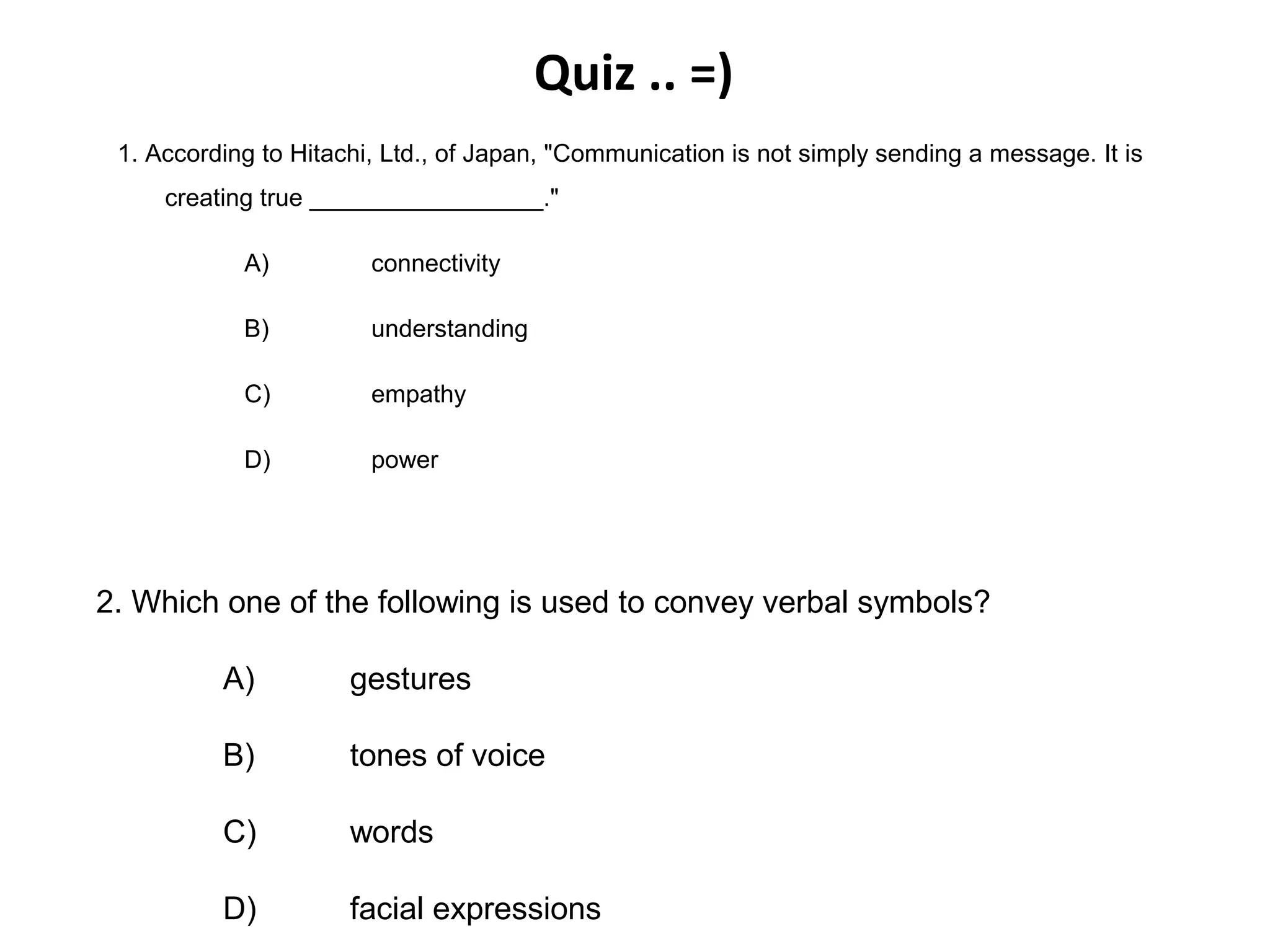

![6. The Greek fabulist Aesop said, "A __________ will not be believed even when he
[or she] speaks the truth."
A) criminal
B) joke-teller
C) poorly dressed person
D) liar
5. The English author G. K. Chesterton said, "A yawn is a silent _______."
A) rudeness
B) insult
C) shout
D) protest](https://image.slidesharecdn.com/mypresentationiqin-151010222819-lva1-app6891/75/Verbal-and-Non-verbal-communication-22-2048.jpg)

